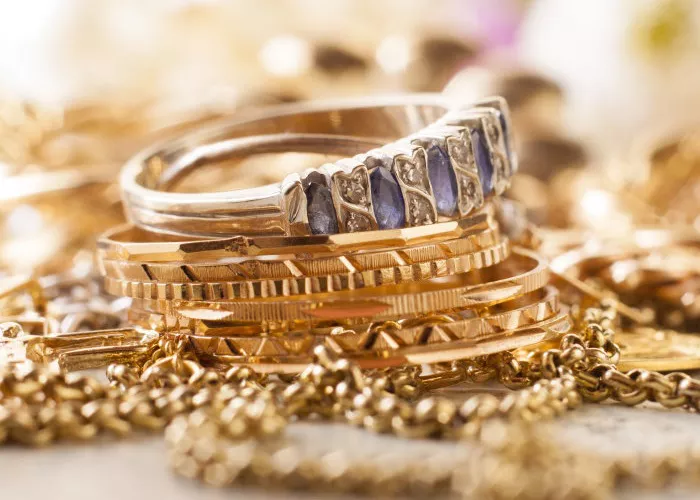Gold has been one of the most sought-after commodities in human history. Its rarity, malleability, and unique properties have made it a symbol of wealth, status, and stability. Throughout various civilizations, from ancient Egypt to modern financial markets, gold has held a special place in both the economy and culture. But when it comes to determining what gold has the highest value, the question isn’t as straightforward as it may seem. Value is subjective and can be influenced by a variety of factors, such as purity, form, and the market environment.
This article delves into the complexities surrounding the value of gold, addressing what defines its worth, the different types of gold, and how the market evaluates them. We will also explore the impact of gold’s purity, its various forms (from bullion to jewelry), and how the global market plays a role in determining which gold holds the highest value.
The Value of Gold: Factors That Influence Its Worth
Gold’s value is not merely determined by its weight or size but by an intricate set of factors that work together. These factors have evolved over time and continue to influence how gold is assessed in the market. To understand which gold has the highest value, we must first examine these core elements:
Purity of Gold: 24K Gold vs. Lower Karats
The purity of gold is perhaps the most important factor when determining its value. Gold is usually measured in karats (K) or fineness, with 24K gold being the highest purity level. While pure gold (24K) is the most valuable per ounce, its softness makes it unsuitable for certain uses, such as jewelry, where lower karat gold (e.g., 18K or 14K) is often preferred for durability. The higher the karat, the greater the percentage of pure gold in the piece. This distinction can play a significant role in the valuation of gold products.
Gold Bullion and Coins: Market Demand and Investment
Gold bullion, which includes bars and coins, is highly valued because it is typically close to pure gold (often 99.99%). These forms of gold are heavily traded in global markets, and their value can be influenced by supply and demand dynamics, geopolitical events, and inflation expectations. The most well-known gold coins, such as the American Gold Eagle or the South African Krugerrand, tend to hold high value due to their reputation and the backing of governments. For investors, these forms of gold are often seen as stores of value, particularly during economic uncertainty.
Gold Jewelry: Cultural Significance and Market Demand
While gold jewelry may not always contain the highest purity of gold, its value is often enhanced by design, craftsmanship, and cultural significance. Certain regions, such as the Middle East or India, place a premium on gold jewelry not just for its intrinsic worth but for its role in social and cultural traditions. In addition, certain gold jewelry items can appreciate over time due to their rarity, craftsmanship, or historical value, especially antique pieces.
Geopolitical and Economic Factors: Gold as a Safe Haven Asset
Gold is often referred to as a “safe haven” asset during times of economic crisis or geopolitical instability. When fiat currencies lose value or when inflation is on the rise, investors turn to gold as a store of value, pushing up its price. In this sense, the value of gold can fluctuate based on market sentiment, and its appeal can be driven by the global economic environment. During these times, even gold in less pure forms, such as 22K jewelry or gold coins, may see a surge in value.
Gold’s Various Forms and Their Market Dynamics
When evaluating the question of which gold has the highest value, it’s crucial to distinguish between the different forms of gold that exist in the market. The following forms are commonly traded and valued in various ways:
Gold Bullion (Bars and Coins)
Gold bullion is often seen as the purest and most straightforward form of gold investment. Gold bars and coins are traded based on their weight and purity, with each bar or coin typically stamped with the purity percentage (e.g., 99.99% pure gold). These forms are often purchased by investors seeking to hedge against inflation or as a store of wealth.
Gold Jewelry
Jewelry made from gold, while not always pure, is highly valued in cultures around the world. The value of gold jewelry is influenced not only by the weight and purity of the metal but also by factors such as design, craftsmanship, and historical or cultural significance. Certain pieces can command higher prices due to rarity or demand in specific regions.
Gold Nuggets
Gold nuggets, often found in the wild, are another valuable form of gold. While the purity of a nugget may vary, the rarity and natural occurrence of gold nuggets often add to their allure. Collectors and investors may value these nuggets, especially those of significant size or unusual characteristics, at a premium.
Gold Futures and ETFs
For investors, gold futures contracts and gold exchange-traded funds (ETFs) offer indirect exposure to gold prices without the need to physically hold the metal. These financial instruments are valued based on the market price of gold, but they can also be subject to market volatility and investor sentiment.
Summary
The question of which gold has the highest value is not easily answered, as the worth of gold is determined by a combination of purity, form, and market demand. While 24K gold is the purest and often commands the highest price per ounce, other forms such as gold bullion coins, gold jewelry, and even gold futures may hold higher market value in certain contexts. The influence of cultural, economic, and geopolitical factors also plays a crucial role in the valuation of gold.
Related topics:
- How Do Beginners Buy Gold? A Beginner’s Guide
- How Big is a One Gram Gold Bar? Exploring Size And Value
- How Many Grams is a 22 Carat Gold Chain? Weight and Value


